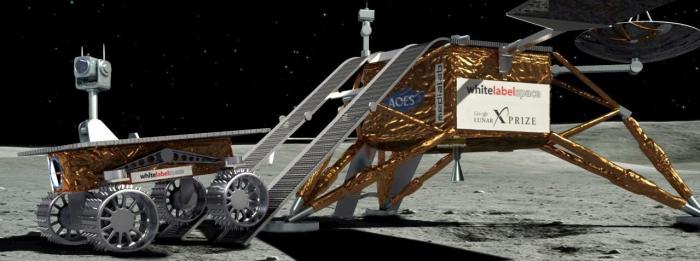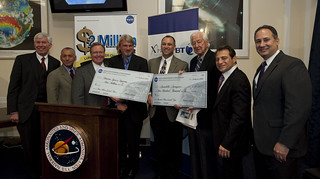Most of the teams competing in Google’s Lunar XPrize Challenge will spend more than the $30 million prize money to get off the ground, but it’s not about the money.There’s a little more at stake.
For some, winning Google’s Lunar XPrize Challenge is a matter of national pride. Only the three major superpowers, the U.S., Russia and China have so far reached the moon. There’s a team from Spain, and another from Italy. The Japanese team calls itself Hakuta, and there are numerous teams from the U.S. They’re working hard with a serious sense of competition. But they’re not getting ready for the winter Olympics in Sochi.
It’s T-minus 23 months for the international assortment of scientists and their sponsors who are literally shooting for the moon in Google’s Lunar XPrize Challenge. The goal is to successfully launch an unmanned spacecraft, land it on the lunar surface and send back high-definition images, in exchange for a $30 million prize from the technology giant and its cosponsors, which include aerodynamic firm Northrup Grumman, phone giant Nokia, and chipmaker Qualcomm. The mission must be accomplished by the end of 2015 to win the grand prize.
Not About The Money
Many, if not all the groups will spend more than the $30 million to get off the ground, but it’s not about the money. For some, it’s a matter of national pride: only the three major superpowers, the U.S., Russia and China have so far reached the moon.

The
United States beat Russia to the moon in a race that was estimated to
have cost NASA $20 billion dollars. A global race is once again taking
place except this time it’s a more private affair.
China is currently most active, with a six-wheeled robotic moon rover named Jade Rabbit roaming the lunar landscape. The Yutu rover began its mission in December, marking the first moon landing by a space probe in 37 years.
Inspiring Radical Breakthroughs
The XPrize Foundation’s goal, according to its Web site is to promote “radical breakthroughs for the benefit of humanity, thereby inspiring the formation of new industries and the revitalization of markets that are currently stuck due to existing failures or a commonly held belief that a solution is not possible.”
In addition to the grand prize for the first lunar landing, the XPrize will award $5 million for second place as well as bonuses for reaching the Apollo 11 module landing site, surviving a lunar night, and for exploring lunar artifacts.
Rules say 90 percent of the funding must come from private rather than government sources, and Google expects some teams will spend as much as $100 million to win the contest. But others are looking to reduce their costs by deploying commercial payloads on the way to the moon.
Israel’s team, SpaceIL, is cutting its costs through innovation. Rather than develop an expensive rover to accomplish the goal of traveling 500 meters (1,620 feet), its 300-pound spacecraft is being designed to land once, then fire up its rockets again to take some aerial pictures and land the required distance away.
“For every pound of rover I need four pounds of propulsion to get it there,” Daniel Saar, director of business
“There is no GPS on the moon,” said Saat. “We have to use a NASA database of images.” The project will also draw from Israel’s defense establishment, borrowing from satellite technology deployed by Israel Aerospace Industries, a government-owned agency.
Saat said that his team, which will launch from a site in the U.S. or Russia, hopes to inspire more of Israel’s young people to pursue careers in science by rising to the challenge of doing big things with limited resources. “Landing on the moon is a complex engineering task,” said Saat. “For a tiny budget of $36 million, we want to show the world we can explore outer space and accomplish various missions.”
Extracted from CIO Today


No comments:
Post a Comment